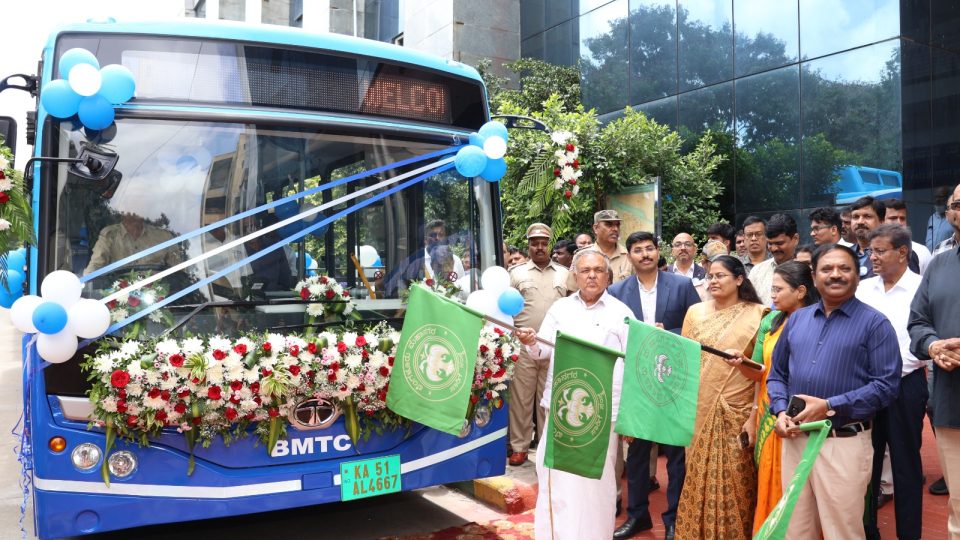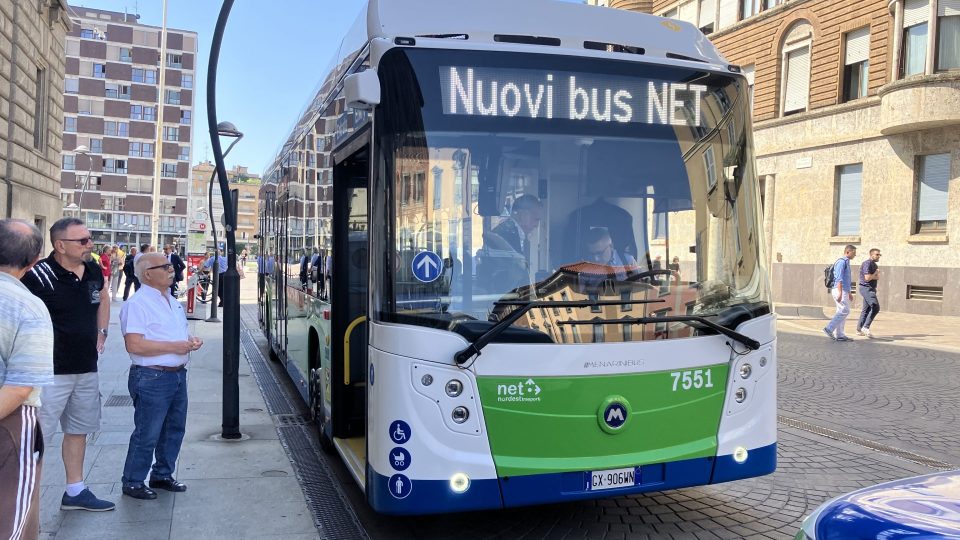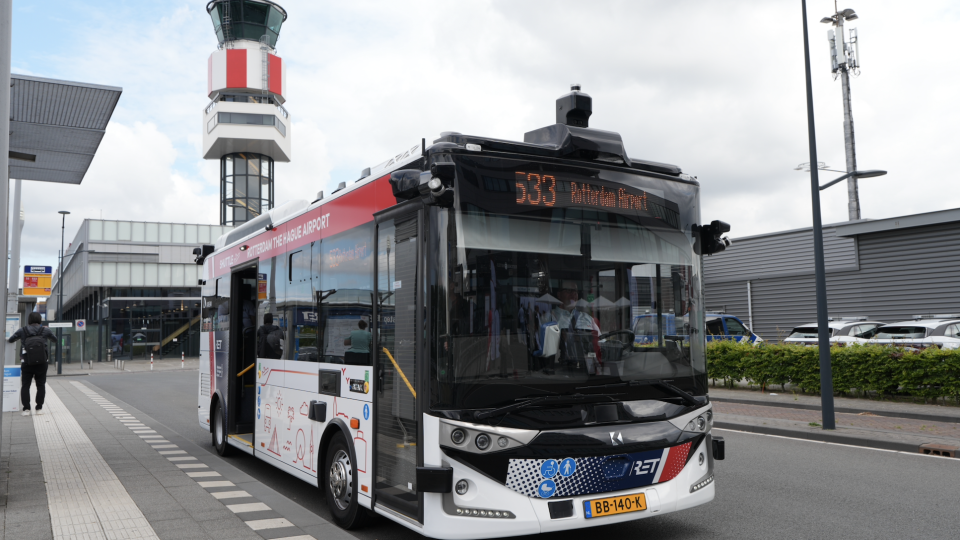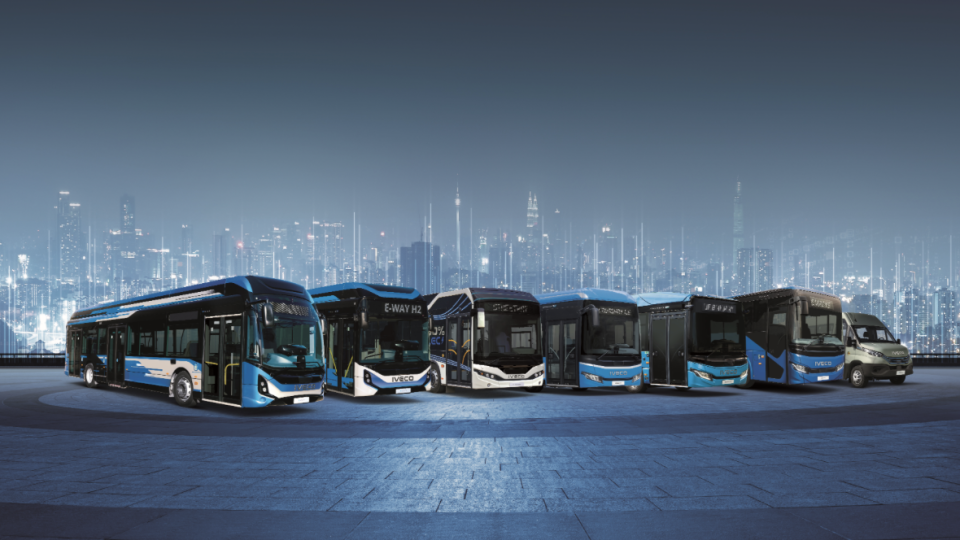Operational analysis of e-buses in São Paulo: focus on energy consumption and operating conditions
Below, a contribution from ZEBRA (Zero Emission Bus Rapid-deployment Accelerator), a partnership led by C40 Cities and the International Council on Clean Transportation (ICCT), with funding from ClimateWorks. This international alliance works to support the deployment of over 3,000 electric buses onto the streets of Latin American cities. Sustainable Bus acts as media partner.It’s the third of a series of articles focusing on the […]
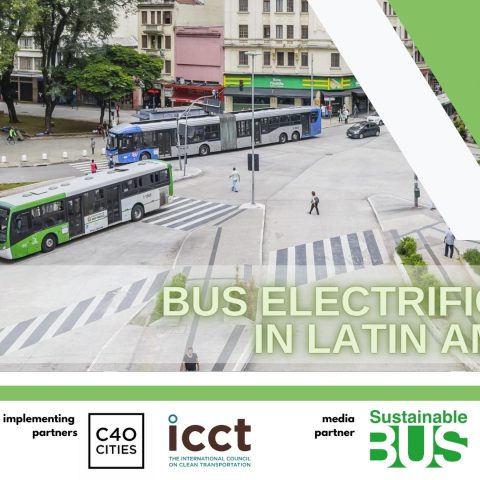
Below, a contribution from ZEBRA (Zero Emission Bus Rapid-deployment Accelerator), a partnership led by C40 Cities and the International Council on Clean Transportation (ICCT), with funding from ClimateWorks. This international alliance works to support the deployment of over 3,000 electric buses onto the streets of Latin American cities. Sustainable Bus acts as media partner.
It’s the third of a series of articles focusing on the electrification of bus fleets in the region.
Feedbacks, questions and contributions are welcome (at info@sustainable-bus.com)
Over the last few years, the city of São Paulo has been committed to improving the environmental performance of its transport system through its Climate Law. In 2009, São Paulo introduced the first iteration of its Climate Law, establishing an ambitious decarbonization target calling for a fossil fuel-free fleet by 2018. Noting the difficulty in reaching the target, the city approved the second version of its Climate Law in 2018, setting gradual emissions reduction targets and leading to a zero-emission fleet goal by 2038.
The city government, for example, committed to include 2,600 electric buses in its fleet by 2024. The pilot project, launched in 2019 by SPTrans in partnership with BYD, enabled the implementation of 18 battery-electric buses in the fleet, operated by the company Transwolff. Results of this pilot project seek to guide the next steps of zero-emission bus transition in the city. A new report by ZEBRA, published in November 2022, analyzes the performance of two electric buses from the pilot project fleet, monitored throughout 2021.
São Paulo, the analysis of electric bus consumption
Operating data and energy consumption of the electric buses were considered to analyze the performance of buses over time under different operating conditions, through one specific city route. The study found significant variations in energy consumption over one year for the same bus and between the analyzed buses.
The average consumption was equal to 1.19 kWh/km for one bus and 1.27 kWh/km for the other, but the daily averages varied between 0.94 kWh/km and 2.29 kWh/km on the analyzed sample. Although there were technical differences between the monitored vehicles (body models are different), both had the same chassis and battery model and similar empty weights. The significant variation of values for the same bus demonstrates the impact of operating conditions on energy consumption.
The monitored buses were charged mainly at night, although it was found that more than one charging event per day was common. The use of air conditioning on buses increased energy consumption, especially on hot days. In general, buses showed higher consumption on days with higher maximum temperatures. In addition, one of the buses tended to consume more energy at higher temperatures than the other, indicating a possible difference in the performance of air conditioning equipment (Figure 8).
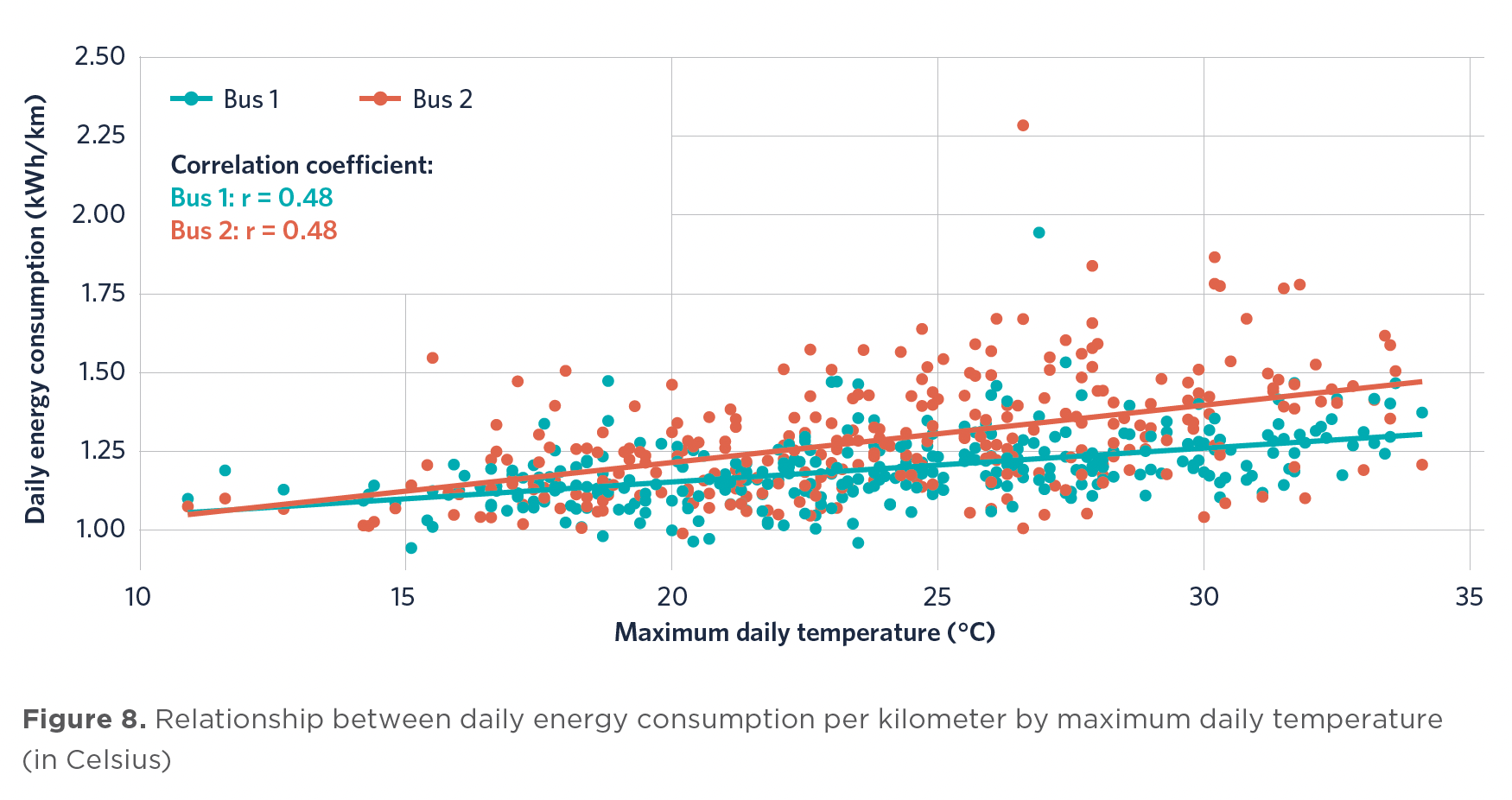
E-buses, the relation between speed and energy consumption
The relationship between average speed and energy consumption was also evaluated. There was a trend towards lower energy consumption on days when buses had higher average speeds. Urban buses tend to have low average speeds (in this case, 14.1 and 13.6 km/h, respectively) due to the high frequency of stops throughout the day to pick up and drop off passengers. Regenerative braking was also impacted by the frequency and intensity of acceleration and deceleration, ranging from 17.2% to 49.2%, with an average value equal to 40.7% for one bus and 38.6% for the other.
Driving style is another factor that affects energy consumption, something not comprehensively analyzed in this study. However, the analysis of regenerative braking can provide indications about the adaptation of driving style to the new technology. Cities and operators are currently working on specific e-bus training for drivers, and preliminary findings show that women perform better than men. Future studies will be needed on the topic.
The results presented in the ZEBRA study are in line with those found in cities that operate large-scale electric bus fleets. It should be noted, though, that the same bus would not necessarily have a similar energy performance if adopted under other operating conditions. In fact, variations in energy consumption are expected even for a bus that runs on just one line, as operating conditions vary throughout the operation – such as transported weight, traffic jams, weather conditions, and driver behavior (Figure 1).
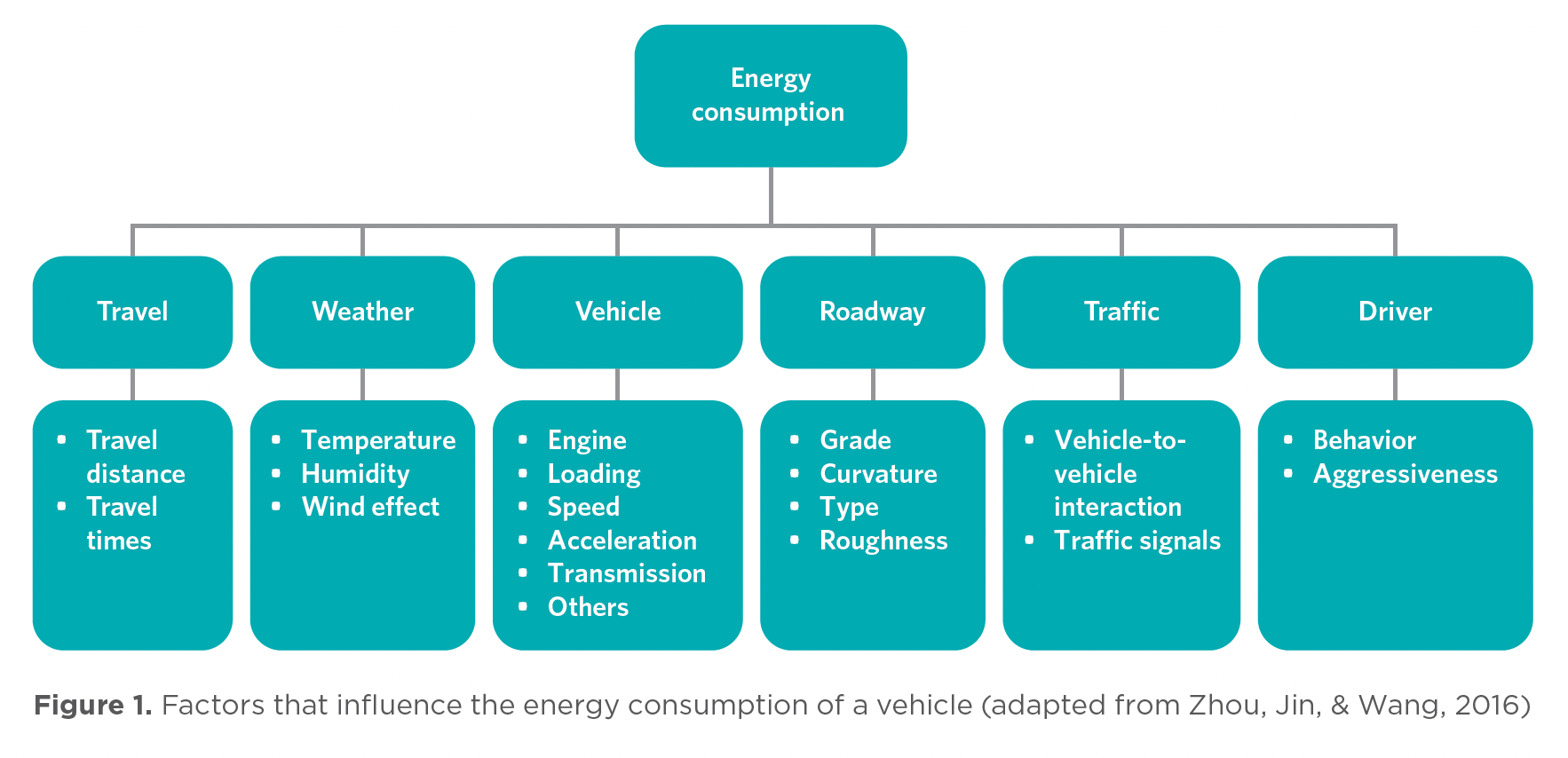
Maximizing the use of these battery-electric vehicles with low operational costs, compared to traditional diesel buses, brings greater financial gains, in addition to the climate and health benefits associated with reduced emissions. This type of monitoring has become an even more important tool as it allows monitoring the evolution of the energy performance and range of these buses, bringing more predictability and safety to the operation.
This report was developed by the ZEBRA partnership and supported by P4G, iCS, and TUMI.
Read more:
– English: https://theicct.org/publication/brazil-hvs-zebra-operational-analysis-electric-bus-sao-paulo-feb23/
– Portuguese: https://theicct.org/publication/brazil-hvs-zebra-analise-operacion-onibus-eletricos-sao-paulo-nov22/
– Transwolff case study: Pilot project of 18 electric buses in São Paulo (Spanish, English and Portuguese).




